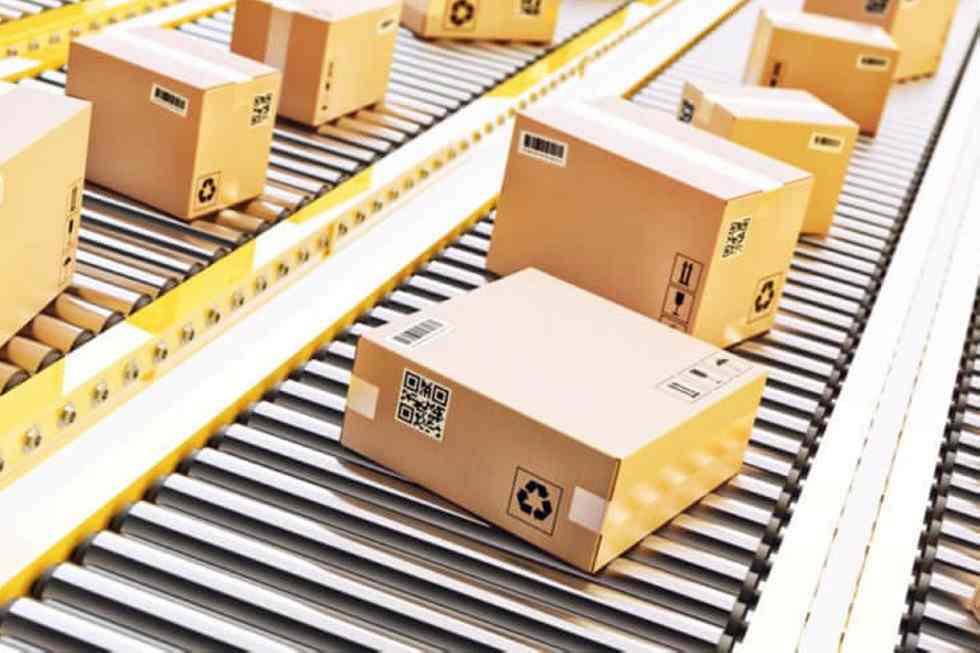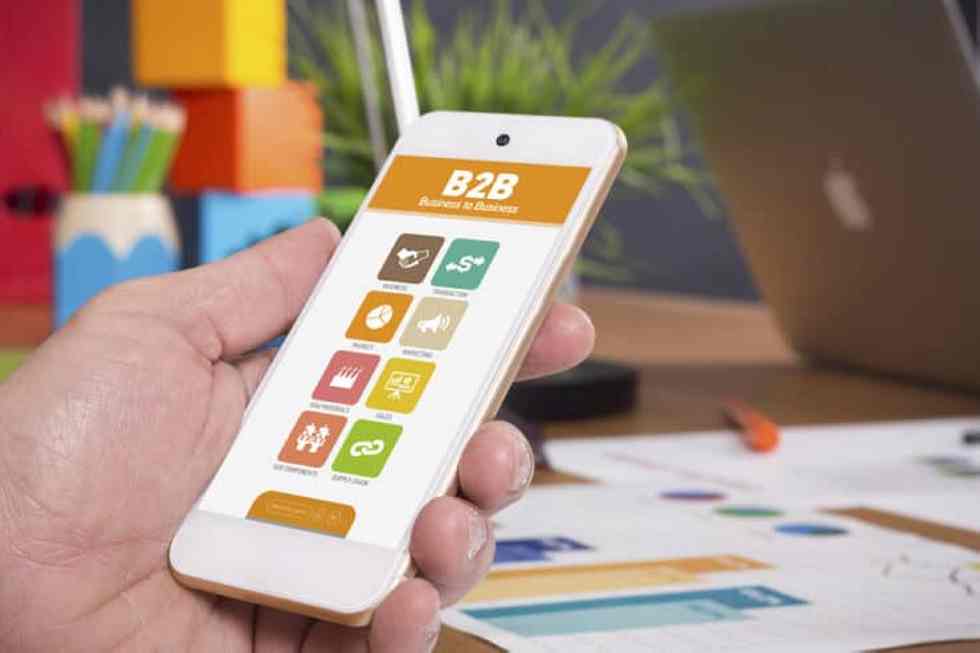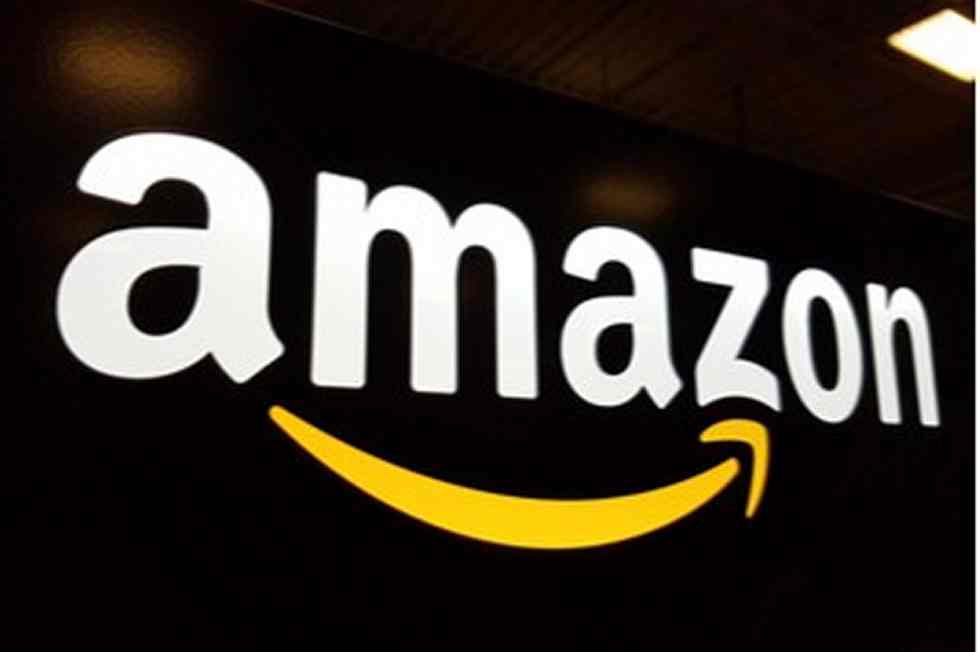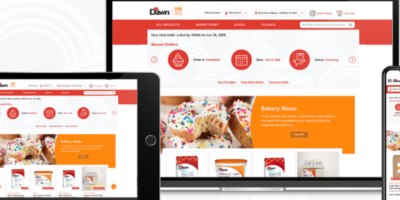
Enterprise purchases are quickly shifting from offline to ecommerce. However is the logistics focus of the manufacturing business shifting alongside? Uncover why effectivity in logistics is now secondary to the web expertise of your clients.
Aided by the rise of 3D printing and robotics, manufacturing is shifting to decentralized places, rising the variety of transport places in manufacturing.
As a shopper, I can order a laptop computer right now and have it delivered tomorrow night time, proper between dinner and my go to to the fitness center. From the second I order, I get fixed Monitor & Hint updates, so I do know precisely when to count on my parcel. And if the laptop computer is just not totally to my liking, it is going to be collected and returned freed from cost, wherever and every time this fits me.
Ecommerce turns into the usual in B2B
This situation is the norm in business-to-consumer ecommerce. However for enterprise patrons, it’s nonetheless removed from actuality. The supply of enterprise orders continues to be typically a black field through which the receiver enjoys little to no management or transparency. The query is: for a way lengthy will this stay?
Ecommerce is quickly changing the bodily order kinds and product catalogs which have dominated B2B gross sales for many years. In line with a 2018 research by expertise and analysis and advisory agency Gartner Inc., 75% of all enterprise procurement inside 5 years takes place through on-line marketplaces and gross sales platforms. This creates an enormous alternative for producers, but it surely additionally brings challenges.
The brand new technology of decisionmakers effortlessly tasks the service they obtain at Amazon.com, Zalando.com or Zappos.com onto their expectations in the direction of enterprise suppliers.
In line with analysis amongst 6,723 enterprise patrons, 69% now count on an Amazon-like shopping for expertise from their B2B suppliers, based on 2018 “State of the Linked Buyer by Salesforce Analysis. 67% already switched distributors as a result of they provide an expertise that’s extra just like the one in shopper retail. Each percentages are even larger among the many new technology of decision-makers born between ’81 and ’99.
What does this imply for the supply of products?
This consumerization of the enterprise buying course of is leaving its marks on suppliers. No fewer than 84% of B2B suppliers now contemplate it their high exterior menace, based on a current survey of 700 B2B executives by Episerver. This additionally interprets to the supply of products. Shipments grow to be extra fragmented and smaller, which will increase your dependence on parcel carriers.
Supply: Inbound Logistics, 2019
Though reducing transport prices continues to steer the record of transport challenges, we see that the rise of ecommerce has grow to be the No. 2 problem for right now’s shippers, intently adopted by bettering customer support, based on a current report in Inbound Logistics. With the information gained from B2C ecommerce, we’re more likely to see the next supply companies grow to be more and more necessary within the B2B area:
Alternative of a number of supply choices. In a enterprise surroundings, there may be often somebody obtainable to obtain a cargo throughout enterprise hours. Nonetheless, this doesn’t imply that one-size-fits-all transport is ample. One buyer is perhaps prepared to attend longer, at decrease supply prices. One other may want their supply right now. To satisfy this various demand, providing a variety of supply choices and supply speeds is essential; from same-day supply for essentially the most time-critical shipments to economy-options for slower deliveries. You may have the ability to provide these through a single supply accomplice, however as a result of ongoing provider specialization, a mixture of carriers is changing into extra frequent and preferable.
Full transparency of transport prices. Similar to shoppers, enterprise patrons don’t prefer to be stunned. By providing most transparency about supply prices, together with any dealing with charges and prices for customs clearance, you forestall uncertainty and considerably enhance buyer expertise.
Actual-time Monitor & Hint Perception & Updates. The necessity for transparency stays as soon as the cargo is within the fingers of the provider. By proactively informing receivers concerning the standing of their shipments, particularly within the occasion of any delays or exceptions, you’ll optimally meet this want. Furthermore, you retain management over the shopper expertise and forestall clients from contacting you or your carriers in frustration.
Localization of supply choices. With ecommerce, you possibly can theoretically promote anyplace on this planet, offered you may also ship. In B2C ecommerce, we’re at the moment seeing that retailers localize their supply choices, combining main carriers reminiscent of DHL, FedEx and UPS with native specialists. This isn’t only for cost-saving causes. Native carriers usually meet the demand of end-customers in a selected geography higher than different carriers.
Extra transport places. Inexpensive, however quick, supply is certainly on the high of the shopper want record. Because of this, the space between shippers and end-customers is decreasing. It reveals within the opening of a number of, smaller transport places as a substitute or extension of conventional mega warehouses. Ship-from-store is the final word instance of this development. Omnichannel retailers use their retailer places for the success of on-line orders, making even same-hour deliveries possible. However this development can also be seen within the manufacturing area. Aided by the rise of 3D printing and robotics, manufacturing is shifting to decentralized places, rising the variety of transport places in manufacturing.
How do you reply to this as a producer?
The foremost logistical change that profitable ecommerce events, each B2C and B2B, result in is the shift from push to drag. The place beforehand the provider dictated supply situations, it’s now the shopper who determines the place, when and by whom items are delivered.
Partly as a result of this improvement, profitable producers are actually saying goodbye to their environment friendly, however very inflexible, provide chains. To satisfy the wants of the brand new technology of enterprise patrons, flexibility is the brand new adage. By constructing in flexibility at tactical locations in your provide chain, you put together your self for the quickly altering calls for and the big range of needs of all of your clients. Check out your provide chain by means of the eyes of buyer expertise and ask your self: What would I consider this as a shopper? The reply may maintain the way forward for your manufacturing enterprise.
Ken Fleming is president of Logistyx Applied sciences, a supplier of transportation administration for parcel transport. For the reason that mid-Nineteen Nineties, Ken has led launches of applied sciences and companies in such areas as provide chain administration, ecommerce and programs integration. He might be reached at [email protected].
Favourite




















